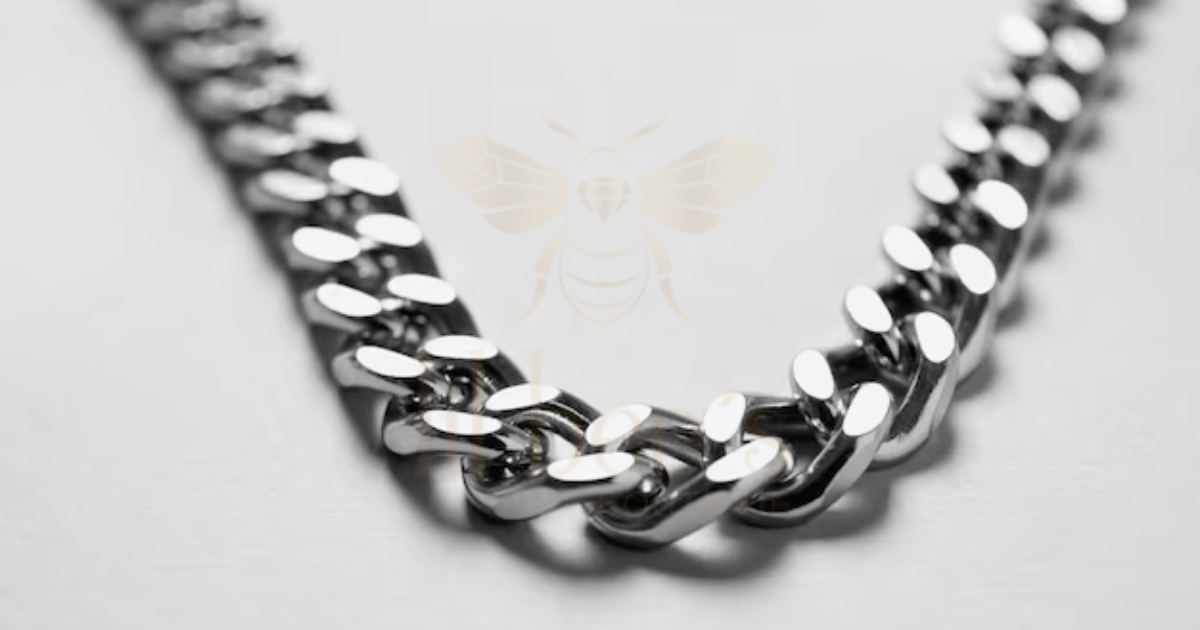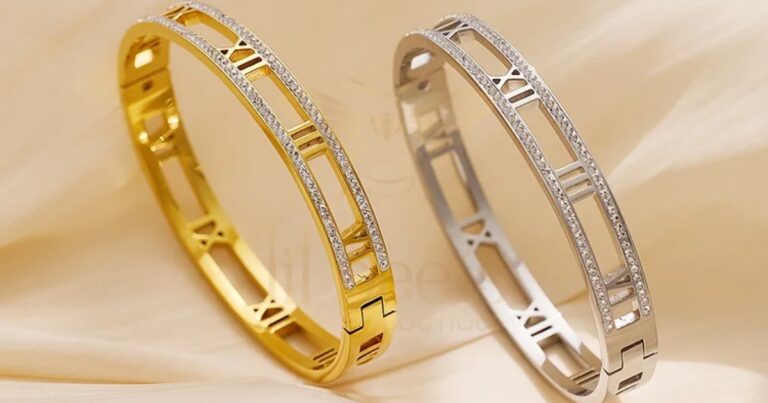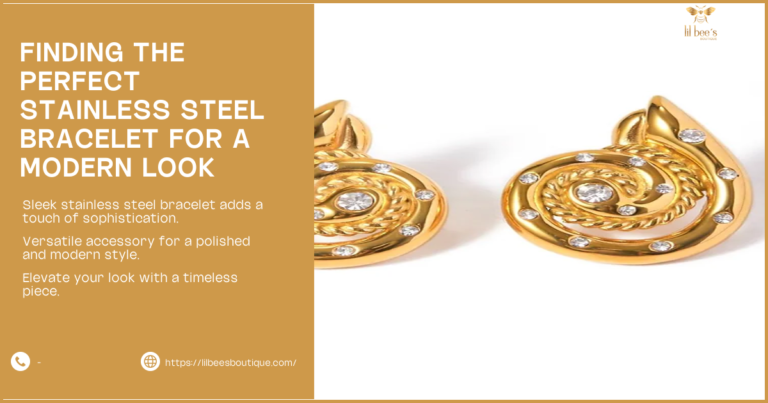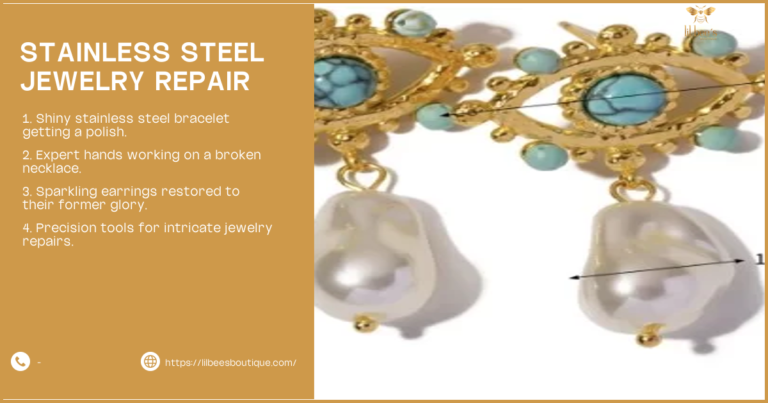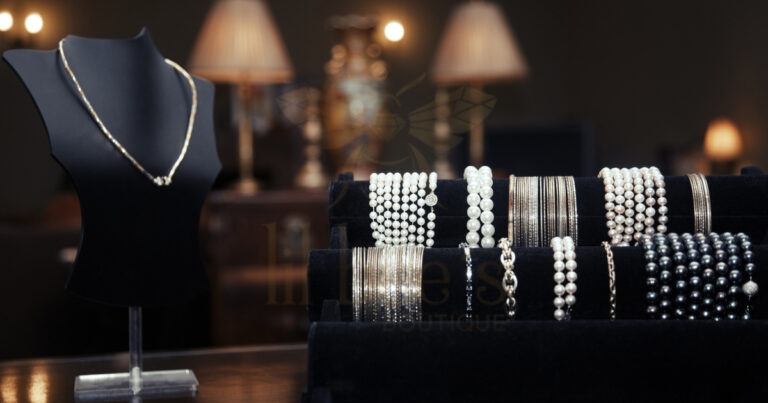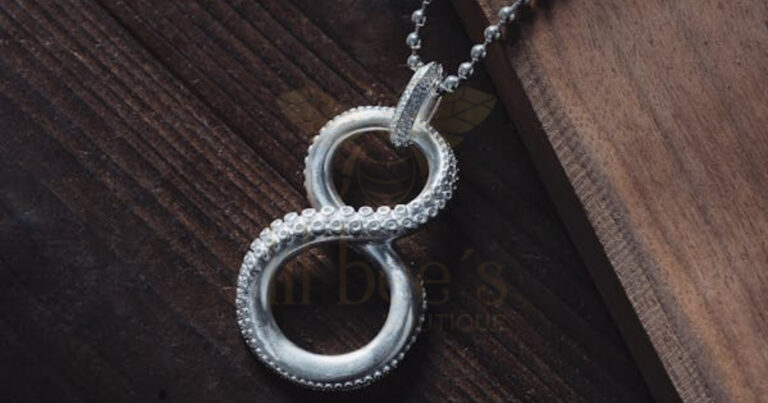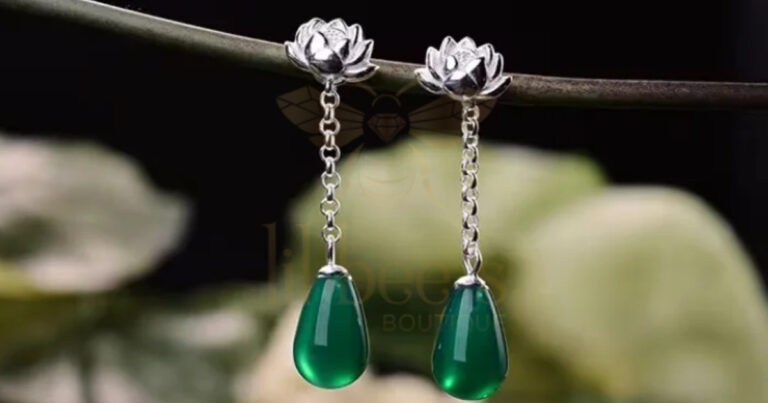What is stainless steel jewelry?
Stainless steel jewelry is a popular choice for those seeking durable and affordable accessories. It’s made from an alloy of steel, chromium, and other metals, creating a robust material that resists corrosion and tarnishing. This type of jewelry has gained popularity due to its strength, longevity, and versatile appearance.
Stainless steel jewelry comes in various forms, including:
- Rings
- Necklaces
- Bracelets
- Earrings
- Watches
Composition and properties of stainless steel
The unique composition of stainless steel gives it remarkable properties that make it ideal for jewelry. The primary components include iron, chromium, and nickel, with chromium being the key element that provides corrosion resistance. This combination results in a material that is:
- Highly resistant to rust and tarnish
- Durable and long-lasting
- Hypoallergenic for most people
- Easy to maintain and clean
| Element | Percentage |
| Iron | 50-70% |
| Chromium | 10-30% |
| Nickel | 8-20% |
| Carbon | 0.08-0.15% |
How Long Does Stainless Steel Jewelry Last? 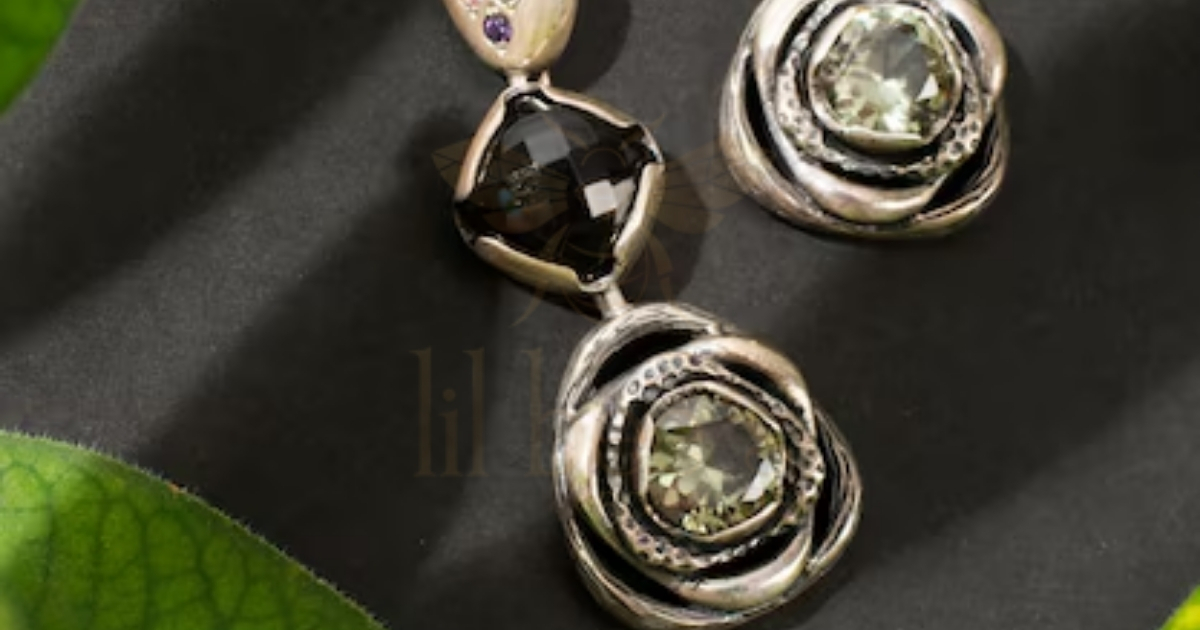
Quality of stainless steel used
The longevity of stainless steel jewelry largely depends on the quality of the material used. Higher-grade stainless steel, such as 316L, offers superior durability and resistance to corrosion. At Lil Bee’s Boutique, we prioritize using high-quality stainless steel to ensure our customers receive jewelry that stands the test of time.
Factors influencing the quality of stainless steel jewelry include:
- Grade of stainless steel
- Manufacturing process
- Finishing techniques
Environmental factors
Environmental conditions play a significant role in how long stainless steel jewelry lasts. While stainless steel is highly resistant to various elements, extreme conditions can affect its appearance and durability over time.
Some environmental factors to consider:
- Humidity levels
- Exposure to chemicals
- Saltwater contact
- UV radiation
Wear and tear
Like any jewelry, stainless steel pieces are subject to wear and tear from regular use. However, compared to other materials, stainless steel is exceptionally resistant to damage and maintains its appearance for longer periods.
Common forms of wear and tear include:
- Surface scratches
- Dents from impacts
- Clasp or joint weakening
How Long Do Stainless Steel Jewelry Last? Lifespan Expectations
Average lifespan of stainless steel jewelry
When asking, “How long does stainless steel jewelry last?” the answer is quite impressive. With proper care, stainless steel jewelry can last a lifetime. Its durability and resistance to corrosion make it an excellent choice for everyday wear and special occasions alike.
Factors contributing to longevity:
- Quality of the stainless steel
- Frequency of wear
- Care and maintenance routine
Comparison to other jewelry materials
Compared to other popular jewelry materials, stainless steel often outperforms in terms of longevity and durability. Its resistance to tarnishing and corrosion gives it an edge over materials like silver or brass.
| Material | Average Lifespan | Maintenance Required |
| Stainless Steel | Lifetime | Low |
| Silver | 20-30 years | High |
| Gold | Lifetime | Moderate |
| Brass | 5-10 years | High |
Maintaining the Longevity of Your Stainless Steel Jewelry
Cleaning techniques
Regular cleaning is essential to maintain the appearance and longevity of your stainless steel jewelry. Fortunately, cleaning stainless steel is relatively simple and doesn’t require harsh chemicals.
Effective cleaning methods:
- Warm water and mild soap solution
- Microfiber cloth for polishing
- Ultrasonic cleaner for intricate pieces
Storage tips
Proper storage is crucial for preserving the quality of your stainless steel jewelry. By following these storage tips, you can prevent scratches and maintain the jewelry’s shine.
Best practices for storing stainless steel jewelry:
- Store pieces separately to avoid scratching
- Use soft cloth pouches or jewelry boxes
- Keep in a cool, dry place away from direct sunlight
Avoiding harsh chemicals
While stainless steel is resistant to many substances, it’s best to avoid prolonged exposure to harsh chemicals. These can potentially damage the protective layer or affect the jewelry’s finish.
Chemicals to avoid:
- Bleach
- Chlorine
- Strong acids or bases
- Abrasive cleaning products
Types of Stainless Steel Used in Jewelry Making 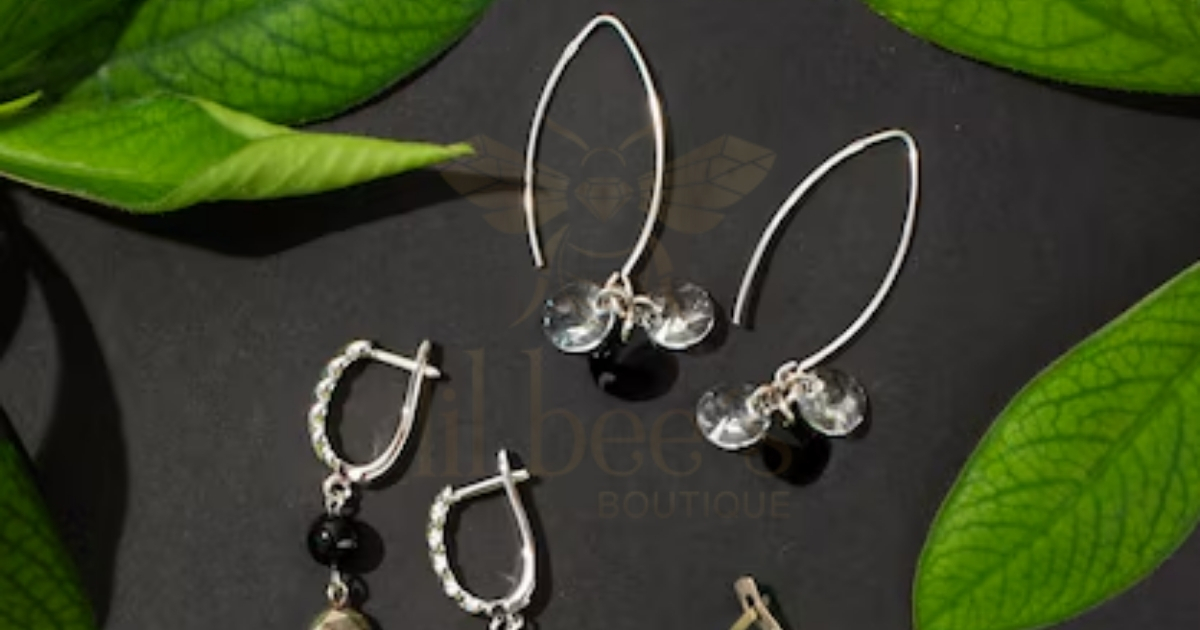
316L stainless steel
316L stainless steel is one of the highest quality options for jewelry making. It’s known for its exceptional corrosion resistance and durability, making it a popular choice for high-end stainless steel jewelry.
Characteristics of 316L stainless steel:
- Excellent resistance to chlorides
- Low carbon content
- Highly resistant to pitting corrosion
304 stainless steel
304 stainless steel is another common type used in jewelry making. While not as corrosion-resistant as 316L, it still offers excellent durability and is more affordable.
Features of 304 stainless steel:
- Good corrosion resistance
- Easily formed and welded
- Suitable for everyday jewelry
Differences in durability
While both 316L and 304 stainless steel are durable, there are some differences in their longevity and resistance to certain conditions.
Comparison of durability:
| Feature | 316L | 304 |
| Corrosion Resistance | Excellent | Very Good |
| Chloride Resistance | High | Moderate |
| Cost | Higher | Lower |
| Ideal Use | High-end pieces | Everyday wear |
Signs of Wear in Stainless Steel Jewelry
Scratches and scuffs
Despite its durability, stainless steel jewelry can develop scratches and scuffs over time. These are usually superficial and don’t affect the structural integrity of the piece.
Dealing with scratches:
- Use a polishing cloth for light scratches
- Professional buffing for deeper scratches
- Accept minor scratches as part of the jewelry’s character
Color changes
While stainless steel is resistant to tarnishing, prolonged exposure to certain elements can cause slight color changes. These are typically temporary and can be addressed with proper cleaning.
Causes of color changes:
- Exposure to harsh chemicals
- Prolonged contact with skin oils
- Reaction to certain medications
Clasp and joint issues
The most common wear points on stainless steel jewelry are often the clasps and joints. These mechanical parts can weaken over time due to repeated use.
Signs of clasp and joint wear:
- Difficulty in opening or closing
- Loose connections
- Visible deformation at stress points
Repairing and Restoring Stainless Steel Jewelry
DIY repair methods
Many minor issues with stainless steel jewelry can be addressed at home with simple DIY methods. These can help extend the life of your jewelry and maintain its appearance.
DIY repair techniques:
- Polishing with a microfiber cloth
- Using a jewelry cleaning solution
- Tightening loose clasps with pliers
Professional restoration services
For more significant damage or valuable pieces, professional restoration services can bring your stainless steel jewelry back to its original condition. These services can address issues beyond the scope of DIY repairs.
Benefits of professional restoration:
- Expert assessment of damage
- Access to specialized tools and techniques
- Restoration of intricate designs and finishes
Advantages of Choosing Stainless Steel Jewelry
Durability and longevity
One of the primary advantages of stainless steel jewelry is its exceptional durability and longevity. This makes it an excellent choice for those who want jewelry that can withstand daily wear.
Benefits of stainless steel’s durability:
- Resistant to bending and breaking
- Maintains appearance over time
- Suitable for active lifestyles
Hypoallergenic properties
Many people choose stainless steel jewelry for its hypoallergenic properties. It’s an excellent option for those with sensitive skin or metal allergies.
Advantages for sensitive skin:
- Low nickel content in high-quality stainless steel
- Reduced risk of skin irritation
- Suitable for long-term wear
Affordability
Compared to precious metals like gold or platinum, stainless steel jewelry offers excellent value for money. Its durability and attractive appearance make it a cost-effective choice for many jewelry lovers.
Cost benefits:
- Lower initial purchase price
- Reduced need for repairs or replacements
- Affordable option for trendy styles
At Lil Bee’s Boutique, we offer a wide range of high-quality stainless steel jewelry that combines durability, style, and affordability. Our pieces are designed to last, ensuring you can enjoy your jewelry for years to come. Contemporary metal accessories add modern flair to outfits These trendy items include jewelry belts and hair clips made from shiny metals Stainless steel sanitizer is a special cleaner that keeps stainless steel surfaces shiny and germ-free It helps protect kitchen appliances and other metal items from rust and stains
Stainless accessory creators make shiny and durable items like jewelry and watches These designers use special metal that doesn’t rust to craft beautiful accessories Durable stainless accessories are tough and long-lasting items made from special metal They can be used for many years without getting rusty or breaking easily
Mend steel ornaments are decorative items made from steel that can be fixed or repaired when broken These ornaments are durable and can be restored to their original beauty with proper care and maintenance Stainless jewelry reactions can happen when some people wear certain types of metal jewelry This reaction may cause skin irritation or discoloration for those who are sensitive to the metals
Rugged jewelry collection features tough and durable accessories for adventurous spirits Earring price calculation
Jewelry stainless colorfast is a special type of metal used in making jewelry that stays shiny and doesn’t change color even after wearing it for a long time Stainless jewelry pricing
Stainless steel rings are shiny and strong jewelry that doesn’t rust or change color Precious metal showdown pits gold silver and platinum against each other in a battle for value and popularity among investors and collectors alike The
Shower safe jewelry is special jewelry you can wear while taking a shower without worrying about damage

